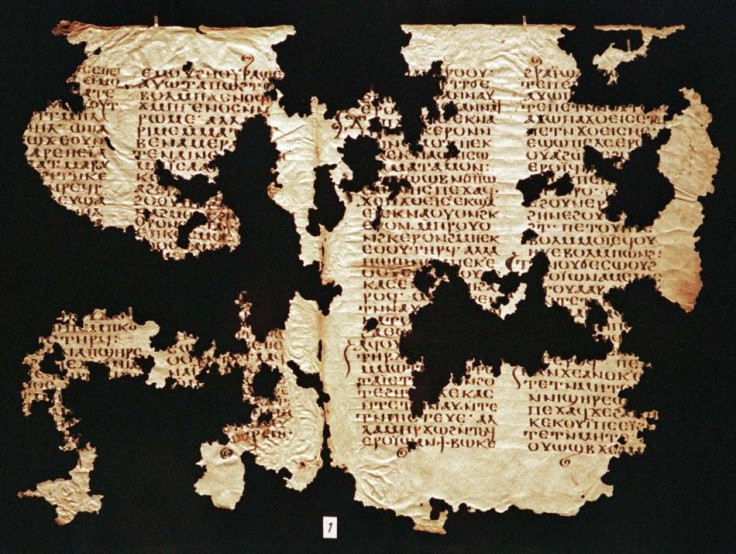?Lost Gospel? Uncovered, Scholars Called Upon For Decoding

Ancient texts found in Egypt have been released by Oxford University in hopes the public can aid in deciphering the ancient Greek text, which could possibly be the "Lost Gospel."
These documents, called The Oxyrhynchus Papyri, were discovered in Egypt over 100 years ago and contain over 200,000 papyrus fragments with text dating back from 500 B.C. to 1,000 A.D.
However, researchers have only deciphered about two percent of The Oxyrhynchus Papyri, according to Discovery News, leading Oxford University in partnership with the Egypt Exploration Society's decision to ask "armchair archaeologists" for assistance in translating the Greek text on a new Web site called Ancient Lives.
"We thought it was time we called in some help," said Oxford University's Chris Lintott on Discovery News.
So far, researchers have deciphered text that contains stories along with private letters, accounts, wills, marriage certificates and land leases, according to the Ancient Lives Web site, where images of the papyri are released. Some literature, namely from Sappho, Menander and Sophocles, were also found in The Oxyrhynchus Papyri.
The most prominent discovery deciphered in the text uncovered that "the number of the beast," also commonly known as "666," is inaccurate. The findings show the number is actually "616" or "665," documented on Oxford University's Oxyrhynchus Web site, along with stories of Jesus casting out demons in the third century.
Oxford University hopes that by allowing volunteers to help decipher the letters using character-recognition tools, they will be closer to finding the latest "Lost Gospel."
Users who visit the Web site can drag around pieces of the papyri and zoom to enlarge the text. The transcribing software saves immediately as each Greek character is identified and matched on the keyboard screenshot, located under the papyrus. Users can also add measurement data so that it will be linked to other people's work where they can join a discussion, according to the website.
The name, The Oxyrhynchus Papyri, comes from the city in Egypt in which it was found. Discovered in 1907 by two men from The Queen's College, Oxford, the men unearthed over 500,000 fragments of papyri with ancient Greek text.
The Ancient Lives Web site says more than 100,000 characters were transcribed in just one day of the release of the Web site.
Must Read: Rare Dinosaur Fossil Found Complete in Alaska
© Copyright IBTimes 2025. All rights reserved.






















